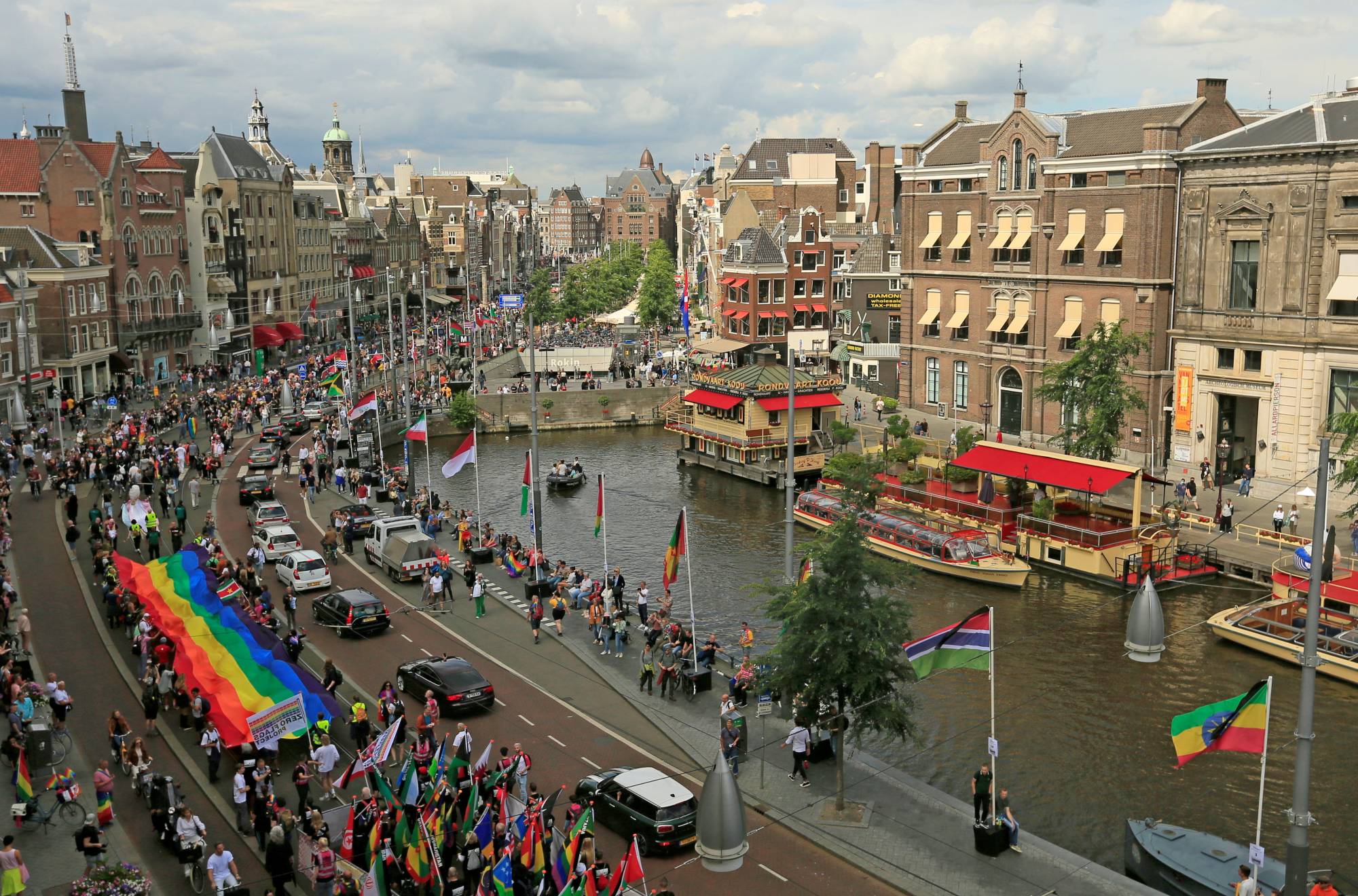On a warm Friday night in July, the sun seemed to linger behind Amsterdam’s low, 16th century skyline. In the red-light district, the crush of tourists that was common before the pandemic had long since vanished, making it easy for a delivery worker to cycle past a handful of gawkers around the old town’s notorious storefronts.
While six German men in matching T-shirts ignored signs warning of a €95 ($112) fine as they swilled beers on a nearby footbridge, they were the exception. Mostly, only small groups of sedate strollers were about on this midsummer evening.
Centuries before its more lurid attractions took hold, Amsterdam was already a tourist draw. As far back as 1345, when a communion wafer at a local church apparently proved indestructible, pilgrims flocked to see the miracle host. In modern times, decidedly less spiritual activities have drawn millions to the city’s quaint, canal-lined quarters. And the noise, garbage and violence followed.

















With your current subscription plan you can comment on stories. However, before writing your first comment, please create a display name in the Profile section of your subscriber account page.